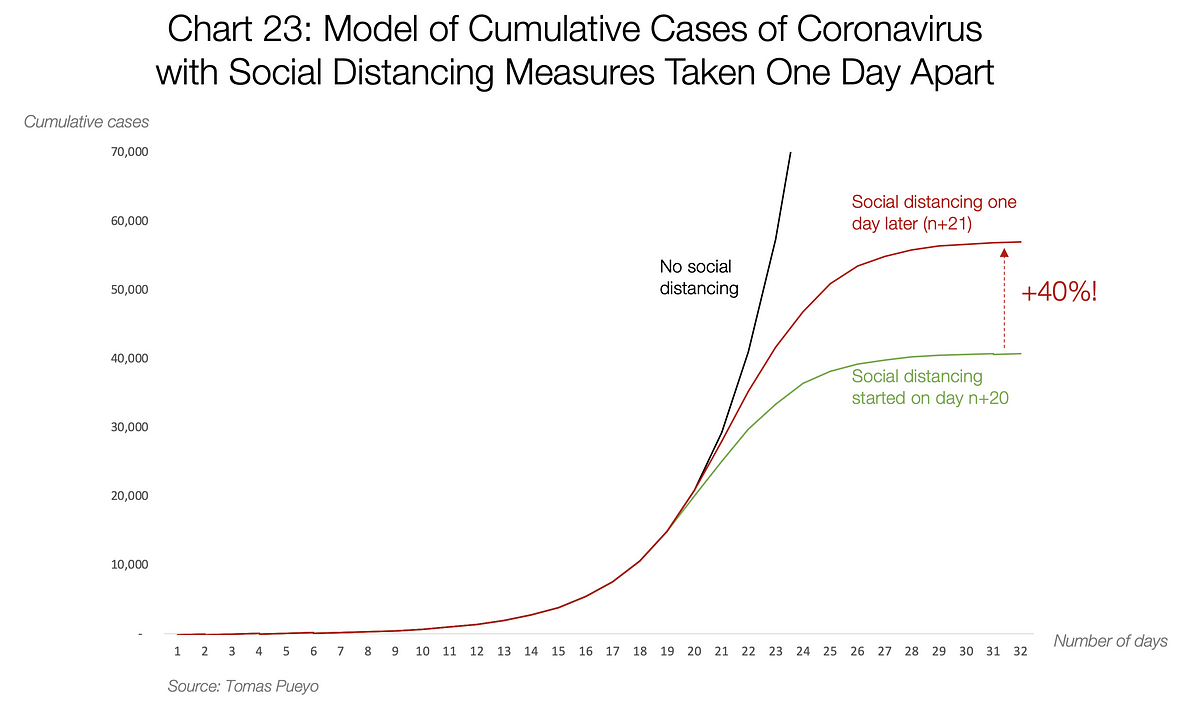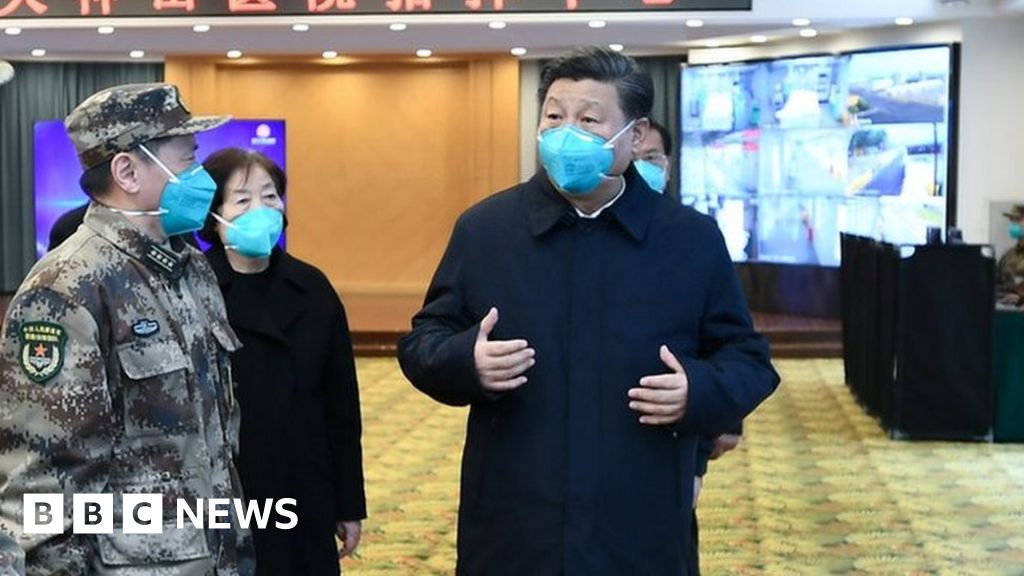For anyone interested in actually reading, instead of just watching news anchors interview people on the street and speculate wildly...
Politicians and Business Leaders: What Should You Do and When?

medium.com
I'll highlight a few snippets.
Here's an important graph. It's historic and measured, not a prediction. It's actual data, of this outbreak, from China. The Blue is what is actually happening. The Orange is what has been detected as happening. Note that it's only when the first few cases of detection that start coming in (in the "Don't panic, look how few people have it! It's not a big deal!" denial stage), that action is taken (in this case, China responded viciously and successfully as only an authoritarian regime can), and the actual rate of infection slows.
"have you wondered why Japan, Taiwan, Singapore, Thailand or Hong Kong haven’t? [...] All of them were hit by SARS in 2003, and all of them learned from it. They learned how viral and lethal it could be, so they knew to take it seriously. That’s why all of their graphs, despite starting to grow much earlier, still don’t look like exponentials"
"This is what you can conclude:
- Excluding these, countries that are prepared will see a fatality rate of ~0.5% (South Korea) to 0.9% (rest of China).
- Countries that are overwhelmed will have a fatality rate between ~3%-5%
Put in another way: Countries that act fast can reduce the number of deaths by a factor of ten."
Another thing, for serious cases, ventilators are needed. There are only 250 in the US. Best guess for spread is 96 million cases in the US. Of those, 1%, or 960,000 will need those ventilators. 250/960,000 = 1/4000 will actually get them. 3999 die per 1 survive on the available ventilator. Plus, that ventilator exists in the first place to help with the existing and expected medical load. Anyone who needed it for that is now going to die instead. So, functionally zero people who need one will have one.
"All of this is what drives a system to have a fatality rate of ~4% instead of ~0.5%. If you want your city or your country to be part of the 4%, don’t do anything today."
"If we reduce the infections as much as possible, our healthcare system will be able to handle cases much better, driving the fatality rate down. And, if we spread this over time, we will reach a point where the rest of society can be vaccinated, eliminating the risk altogether. So our goal is not to eliminate coronavirus contagions. It’s to postpone them."
"If the transmission rate goes down by 25% (through Social Distancing), it flattens the curve and delays the peak by a whole 14 weeks. Lower the transition rate by 50%, and you can’t see the epidemic even starting within a quarter."
And lastly... the importance of acting right now versus even just tomorrow, let alone not at all, is 40% difference in cases.
So... it's complicated. People's brains do not intuitively grasp the exponential function. Everyone instinctively just wants to wait and see, then act "if/when it's time", but "wait and see" only tells you "Oops, yep, a month ago was the best time", it's too late. That's why it's important for things like car shows (and other public gatherings) to be shut down and shut down now, not waiting to see if it gets worse. Pandemics are not linear. Do you want that black line, or that red one, or that green one?
For what it's worth, social isolation and no public gatherings has a decent chance of bankrupting me and many of my peers, (a huge portion of my income comes from events), and I still think it's the best thing to do. The alternative in unconscionable.
It depends on the severity of the response, but it looks like that's going to be the ballpark regardless. I'd be thrilled to be wrong. I'm not a panicking type. But the data is there.








